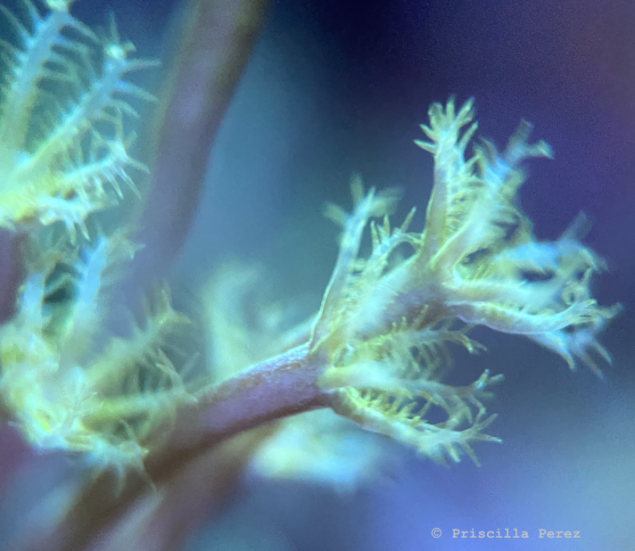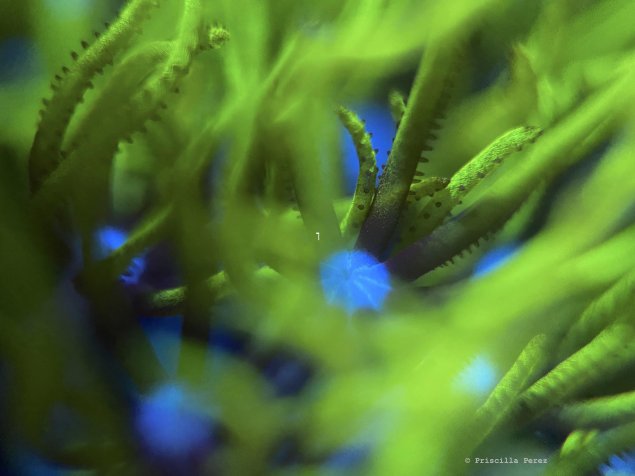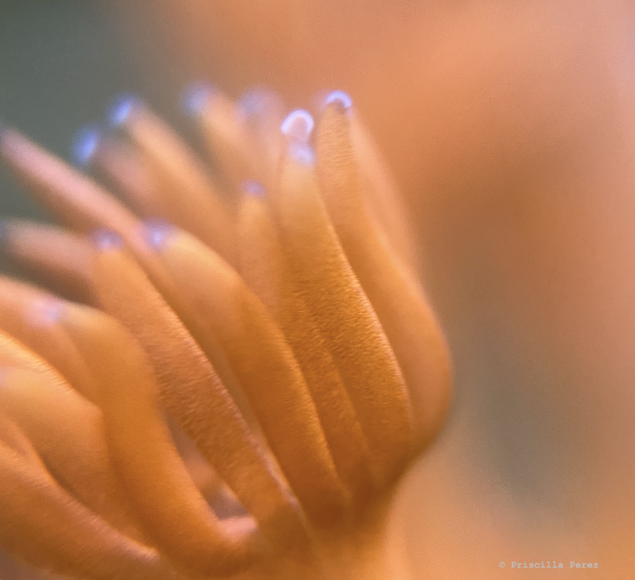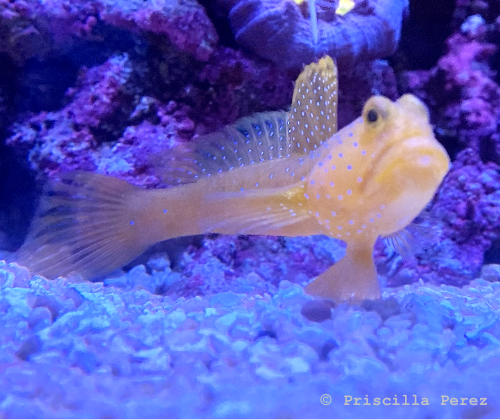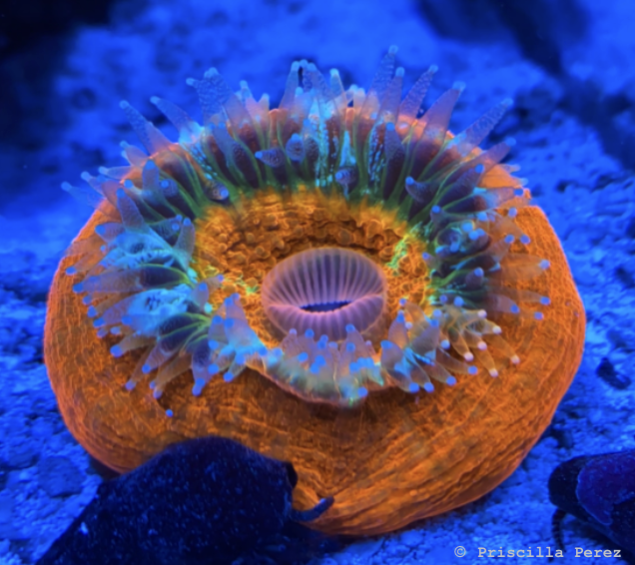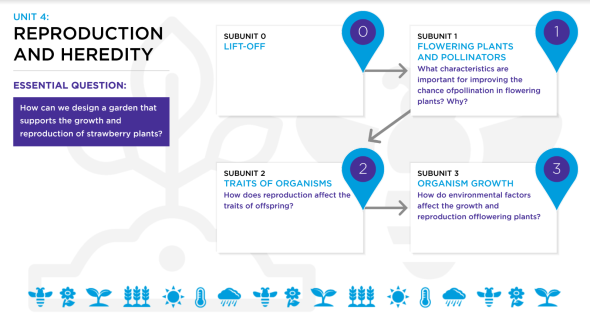
6th Grade Unit 4: Reproduction and Heredity Roadmap
This page hosts Unit 4: Reproduction and Heredity, and a roadmap of the 3 subunits that will be covered.
Subunit 1: Flowering Plants and Pollinators
Link to this section
Below you will view and download:
🟧 Subunit Assessment Opportunities
🟧 5E Lesson Sequence
Subunit 1: Assessment Opportunities
Subunit 1 Assessment Opportunities
What should my students know and be able to do?
What should I prioritize?
Subunit 1: 5E Lesson Sequence
Subunit Description
📂 Download ALL lessons at one time for Unit 4: Subunit 1 from this folder. 📂
The Engage lesson begins with students considering their background knowledge about flowering plants’ interactions with animals. Students watch a video (with the sound off) showing an interaction between a bee and a plant and then make predictions about the nature of these interactions. In the Explore lesson, students use a brief reading to examine the structure and function of relationships between plants and pollinators and explain the interactions between bees and plants. Next, students begin a lesson sequence on pollination and make connections between the traits of plants and pollinators. In the Explain lesson, students read an article about pollination and construct models of the different methods of pollination. In the Elaborate lesson, students apply their understanding to the Culminating Project. Students learn about the structure of the strawberry flower and how the heavy and sticky nature of strawberry pollen increases the chance of pollination through bees. In the Evaluate lesson, students use what they have learned to understand the relationship between aa native California plant and its pollinator. Next, students critique, correct, and clarify an imaginary student’s statement about the nature of plants’ traits and animals’ roles in supporting plant pollination. Lastly, students revisit their Know, Wonder, Learned charts and the Driving Question Board.
The Big Conceptual Goals for this subunit are
- Although there are other ways for pollination to occur, pollinators play an important role in supporting flowering plant pollination.
- Pollinators and plants have a mutually beneficial relationship.
- The structures in plants and animals support the mutually beneficial relationship between plants and pollinators, including pollination.
| Lesson | Lesson Name | Teacher Document | Student Handout |
|---|---|---|---|
| 1 | Engage | ||
| 2 | Explore | ||
| 3 | Explain | ||
| 4 | Elaborate | ||
| 5 | Evaluate | 6.4 SU1 5Evaluate Student | |
📂 Download ALL lessons at one time for Unit 4: Subunit 1 from this folder. 📂
Subunit 2: Traits of Organisms
Link to this section
Below you will view and download:
🟧 Subunit Assessment Opportunities
🟧 5E Lesson Sequence
Subunit 2: Assessment Opportunities
Subunit 2 Assessment Opportunities
What should my students know and be able to do?
What should I prioritize?
|
|
|
|
|
|
|
|
|
|
|
|
|
|
|
|
|
|
|
|
|
|
|
|
|
|
|
|
|
|
Subunit 2: 5E Lesson Sequence
Subunit Description
📂 Download ALL lessons at one time for Unit 4: Subunit 2 from this folder. 📂
In this subunit, students consider the causes behind the appearance of organisms and how this is related to reproduction. In the Engage lesson, students begin by observing two families, human and bacteria, and noting similarities and differences between individuals. Next, in the Explore lesson, students observe reproduction in several species and make connections between the type of reproduction and the traits of offspring. In the Explain lesson, students read an article that explains how sexual and asexual reproduction result in differences in genetic and trait variation. Students also learn how to use a Punnett square to predict specific traits in the offspring that two individuals can produce. In the Elaborate lesson, students explore the benefits and tradeoffs of sexual and asexual reproduction. In the Evaluate lesson, students apply their understanding of heredity to the Culminating Project.
The Big Conceptual Goals for this subunit are
- Sexual reproduction involves two parents and generates genetic variation.
- Asexual reproduction involves a single parent and does not generate genetic variation.
- An organism’s traits are influenced by the expression of one or more genes.
- An individual gene may come in two or more alternative forms called alleles.
- A population of organisms with greater genetic variation has a better chance of adapting to a changing environment as compared with a population with less genetic variation.
| Lesson | Lesson Name | Teacher Document | Student Handout |
|---|---|---|---|
| 1 | Engage | ||
| 2 | Explore | ||
| 3 | Explain | ||
| 4 | Elaborate | ||
| 5 | Evaluate | 6.4 SU2 5Evaluate Student | |
📂 Download ALL lessons at one time for Unit 4: Subunit 2 from this folder. 📂
Subunit 3: Organism Growth
Link to this section
Below you will view and download:
🟧 Subunit Assessment Opportunities
🟧 5E Lesson Sequence
Subunit 3: Assessment Opportunities
Subunit 3 Assessment Opportunities
What should my students know and be able to do?
What should I prioritize?
|
|
|
|
|
|
|
|
|
|
|
|
|
|
|
|
|
|
|
|
|
|
|
|
|
|
|
|
|
|
Subunit 3: 5E Lesson Sequence
Subunit Description
📂 Download ALL lessons at one time for Unit 4: Subunit 3 from this folder. 📂
Students begin the Engage lesson by discussing the parts that make up an organism’s environment. Students then analyze rain data for San Francisco and consider how these environmental factors affect the growth of flowering plants in the city. In the Explore lesson, students collect and analyze data from the experiments they set up in Subunit 1. In the Explain lesson, students read an article that provides evidence about the environmental factors that affect the growth of flowering plants. In the Elaborate lesson, students apply this understanding to the Culminating Project. In the Evaluate lesson, students evaluate their understanding by completing the Group and Individual Culminating Project.
| Lesson | Lesson Name | Teacher Document | Student Handout |
|---|---|---|---|
| 1 | Engage | ||
| 2 | Explore | ||
| 3 | Explain | ||
| 4 | Elaborate | ||
| 5 | Evaluate | ||
📂 Download ALL lessons at one time for Unit 4: Subunit 3 from this folder. 📂
Unit 4 Documents
Link to this section
Below you will view and download: Unit Plan, Standards, Culminating Project Assessments and Rubrics, Common Misconceptions, Materials, Unit 0: Lift-Off Lessons and Resources.
6.4 Reproduction and Heredity: Overview
Overview
Through investigations, students identify several cause and effect relationships related to reproduction, heredity, behavior, and organism growth. In Subunit 1, students explain how flowering plant structures can increase the chance of pollination. In Subunit 2, students explain how sexual reproduction results in more genetic and trait variation in offspring than asexual reproduction. In Subunit 3, students analyze data from self-designed experiments to determine the effect environmental factors have on the growth of organisms.
6.4 Reproduction and Heredity: Unit Plan
Unit 4: Reproduction and Heredity - Unit Plan
View and download (by making a copy) Unit 4 Plan
|
|
||
|
|
||
|
[Clarification Statement: Emphasis is on using models such as Punnett squares, diagrams, and simulations to describe the cause and effect relationship of gene transmission from parent(s) to offspring and resulting genetic variation.] [Clarification Statement: Examples of behaviors that affect the probability of animal reproduction could include nest building to protect young from cold, herding of animals to protect young from predators, and vocalization of animals and colorful plumage to attract mates for breeding. Examples of animal behaviors that affect the probability of plant reproduction could include transferring pollen or seeds, and creating conditions for seed germination and growth. Examples of plant structures could include bright flowers attracting butterflies that transfer pollen, flower nectar and odors that attract insects that transfer pollen, and hard shells on nuts that squirrels bury.] [Clarification Statement: Examples of local environmental conditions could include availability of food, light, space, and water. Examples of genetic factors could include large breed cattle and species of grass affecting growth of organisms. Examples of evidence could include drought decreasing plant growth, fertilizer increasing plant growth, different varieties of plant seeds growing at different rates in different conditions, and fish growing larger in large ponds than they do in small ponds.] [Assessment Boundary: Assessment does not include genetic mechanisms, gene regulation, or biochemical processes.]
|
|
|
|
|
||
|
|
||
|
|
||
|
|
||
|
|
||
|
|
||
|
|
||
|
|
||
|
|
||
|
|
|
|
|
|
||||
|
|
|
|
|
|
|
|
|
|||
|
|
|
|
|
|
|
|
|
|
||
|
|
|
|
|
|
|
|
|
|||
|
|
|
|||
|
|
|
|||
|
|
||||
|
|
|
|
|
|
|
|
|
|
||
|
|
|
|
|
|
|
|
|
|
|
|
|
|
|
|
||
|
|
||||
|
|
|
|
|
|
|
|
|
|
|
|
|
|
|
|
|
|
“Disciplinary Core Ideas, Science and Engineering Practices, and Crosscutting Concepts” are reproduced verbatim from A Framework for K-12 Science Education: Practices, Crosscutting Concepts, and Core Ideas. DOI: https://doi.org/10.17226/13165. National Research Council; Division of Behavioral and Social Sciences and Education; Board on Science Education; Committee on a Conceptual Framework for New K-12 Science Education Standards. National Academies Press, Washington, DC. This material may be reproduced for noncommercial purposes and used by other parties with this attribution. If the original material is altered in any way, the attribution must state that the material is adapted from the original. All other rights reserved.
6.4 Reproduction and Heredity: Standards
Reproduction and Heredity
Next Generation Science Standards Performance Expectations
|
|
[Clarification Statement: Emphasis is on using models such as Punnett squares, diagrams, and simulations to describe the cause and effect relationship of gene transmission from parent(s) to offspring and resulting genetic variation.] |
|
|
|
|
|
[Clarification Statement: Examples of local environmental conditions could include availability of food, light, space, and water. Examples of genetic factors could include large breed cattle and species of grass affecting growth of organisms. Examples of evidence could include drought decreasing plant growth, fertilizer increasing plant growth, different varieties of plant seeds growing at different rates in different conditions, and fish growing larger in large ponds than they do in small ponds.] [Assessment Boundary: Assessment does not include genetic mechanisms, gene regulation, or biochemical processes.] |
NGSS Lead States. 2013. Next Generation Science Standards: For States, By States. Washington, DC: The National Academies Press.
Disciplinary Core Ideas
LS3.A: Inheritance of Traits
- Variations of inherited traits between parent and offspring arise from genetic differences that result from the subset of chromosomes (and therefore genes) inherited. (MS-LS3-2)
LS3.B: Variation of Traits
- In sexually reproducing organisms, each parent contributes half of the genes acquired (at random) by the offspring. Individuals have two of each chromosome and hence two alleles of each gene, one acquired from each parent. These versions may be identical or may differ from each other. (MS-LS3-2)
LS1.B: Growth and Development of Organisms
- Organisms reproduce, either sexually or asexually, and transfer their genetic information to their offspring. (secondary) (MS-LS3-2)
- Plants reproduce in a variety of ways, sometimes depending on animal behavior and specialized features for reproduction. (MS-LS1-4)
- Genetic factors as well as local conditions affect the growth of the adult plant. (MS-LS1-5)
Science and Engineering Practices
Developing and Using Models (MS-LS3-2)
- Develop and use a model to describe phenomena.
- Evaluate limitations of a model for a proposed object.
*Constructing Explanations and Designing Solutions (MS-LS1-5) (Focal Practice)
- Apply scientific ideas or principles to design, construct, and/or test a design of an object, tool, process or system.
Engaging in Argument from Evidence (MS-LS1-4)
- Construct, use, and/or present an oral and written argument supported by empirical evidence and scientific reasoning to support or refute an explanation or a model for a phenomenon or a solution to a problem.
Crosscutting Concepts
*Patterns (Focal Crosscutting Concept)
- Observed patterns of forms and events guide organization and classification, and they prompt questions about relationships and the factors that influence them.
Cause and Effect
- Phenomena may have more than one cause, and some cause and effect relationships in systems can only be described using probability. (MS-LS1-4, MS-LS1-5, MS-LS3-2)
“Disciplinary Core Ideas, Science and Engineering Practices, and Crosscutting Concepts” are reproduced verbatim from A Framework for K-12 Science Education: Practices, Crosscutting Concepts, and Core Ideas. DOI: https://doi.org/10.17226/13165. National Research Council; Division of Behavioral and Social Sciences and Education; Board on Science Education; Committee on a Conceptual Framework for New K-12 Science Education Standards. National Academies Press, Washington, DC. This material may be reproduced for noncommercial purposes and used by other parties with this attribution. If the original material is altered in any way, the attribution must state that the material is adapted from the original. All other rights reserved.
Connections to Nature of Science
Scientific Knowledge Is Based on Empirical Evidence
- Scientists look for patterns and order when making observations about the world.
NGSS Lead States. 2013. Next Generation Science Standards: For States, By States. Washington, DC: The National Academies Press.
Link to Connect the 6th Grade Reproduction and Heredity Unit with Prior Knowledge doc.
6.4 Reproduction and Heredity: Culminating Project Assessments and Rubrics
Culminating Project Assessments and Rubrics
📂Download ALL files at one time from the 6.4 Culminating Project Assessments folder.📂
| Culminating Project File Docs |
|---|
| 6.4 Main–Culminating Projects |
| 6.4 Oral Presentation Rubric |
| 6.4 Science Content Rubric |
| 6.4 Science and Engineering Practices Rubric |
📂Download ALL files at one time from the 6.4 Culminating Project Assessments folder.📂
6.4 Reproduction and Heredity: Common Misconceptions
Common Misconceptions
View and download (by making a copy) 6.4 Common Misconceptions
Subunit 1: Flowering Plants and Pollinators
|
|
|
|
|
|
Subunit 2: Traits of Organisms
|
|
|
|
|
|
|
|
|
Subunit 3: Organism Growth
6.4 Reproduction and Heredity: Materials
Materials
The Unit 4: Reproduction and Heredity Materials table includes all of the items needed to teach five sections of this unit in a classroom of 32 students (eight groups of four).
A detailed breakdown of how these items are used throughout the unit can be found in your Teacher Background Section at the subunit level and in each individual lesson in your Teacher Guide.
- Permanent materials have already been provided to all middle schools in the district and are expected to be reused from year to year.
- Consumable materials are replenished on an as-needed basis from year to year.
- Teacher-provided materials must be supplied by teachers each year.
Unit 4: Reproduction and Heredity Materials
|
|
6.4 Reproduction and Heredity: Subunit 0: Lift-Off Lessons
Subunit 0: Lift-Off
📂 Download ALL lessons at one time for Subunit 0: Lift-Off from this folder.📂
Lessons
| Lift-Off Lesson Documents |
|---|
| 6.4 SU0 Liftoff Slides |
| 6.4 SU0 Liftoff Teacher |
| 6.4 SU0 Liftoff Student |
📂 Download ALL lessons at one time for Subunit 0: Lift-Off from this folder.📂
6.4 Reproduction and Heredity: Want to know more about this unit?
Want to know more about this unit?
Resources
Here are some resources for Unit 6.4 Reproduction and Heredity:
Reproduction and Heredity
University of Utah: Learn.Genetics
“Learn.Genetics.” Learn.Genetics. Accessed May 9, 2020. https://learn.genetics.utah.edu/.
Strategic Education Research Partnership: Science Generation
“Science Generation: SERP Institute.” Science Generation | SERP Institute. Accessed November 4, 2019. https://www.serpinstitute.org/scigen.
Newsela: Life Sciences: Inheritance of Traits
“Life Sciences: Inheritance Of Traits.” Newsela. Accessed November 4, 2019. https://newsela.com/text-sets/35655.
Exploratorium. “Science of Gardening.” Exploratorium Science of Gardening: The Secret Lives of Flowers. https://www.exploratorium.edu/gardening/bloom/secret_life_of_flowers/index.html
Strawberries
NC State Strawberry Pollination Basics
“Strawberry Pollination Basics.” NC State Extension News. Accessed May 9, 2020. https://entomology.ces.ncsu.edu/small-fruit-insect-biology-management/strawberry-pollination-basics/. Strawberry Flavor
“qFaFAD1: Strawberry γ-Decalactone.” RosBREED. Accessed May 9, 2020. https://www.rosbreed.org/breeding/dna-tests/strawberry/decalactone.
“New UC Strawberries Have Disease Resistance, Other Traits.” Fruit Growers News. Accessed May 9, 2020. https://fruitgrowersnews.com/news/new-uc-strawberries-have-disease-resistance-other-traits/.
Pollination and Strawberry Traits
Klatt, Björn K, Andrea Holzschuh, Catrin Westphal, Yann Clough, Inga Smit, Elke Pawelzik, and Teja Tscharntke. “Bee Pollination Improves Crop Quality, Shelf Life and Commercial Value.” Proceedings. Biological sciences. The Royal Society, December 4, 2013. https://www.ncbi.nlm.nih.gov/pmc/articles/PMC3866401/.
Experimental Design
National Center for Education Statistics: Create a Graph
“National Center for Education Statistics (NCES) Kids' Zone Home Page, Part of the U.S. Department of Education.” NCES Kids' Zone Test Your Knowledge. Accessed November 4, 2019. https://nces.ed.gov/nceskids/createagraph/.
Science Buddies: Variables in Your Science Fair Project
Science Buddies. “Variables in Your Science Fair Project.” Science Buddies. Science Buddies, August 28, 2019. https://www.sciencebuddies.org/science-fair-projects/science-fair/variables#whatarevariables.
The Human Spark: Experimenting with Experiments
“Experimenting with Experiments ~ Lesson Activities.” PBS. Public Broadcasting Service, January 19, 2011. http://www.pbs.org/wnet/humanspark/uncategorized/experimenting-with-experiments-lesson-activities/431/
Other Resources Used in 6.4 Reproduction and Heredity
Buddies, Science. “Squishy Science: Extract DNA from Smashed Strawberries.” Scientific American. Scientific American, January 31, 2013. https://www.scientificamerican.com/article/squishy-science-extract-dna-from-smashed-strawberries/.
Cassidy, Lisa Marie PotterJosh, Lisa Marie Potter, and Josh Cassidy. “This Vibrating Bumblebee Unlocks a Flower's Hidden Treasure.” KQED, September 27, 2016. https://www.kqed.org/science/781757/this-vibrating-bumblebee-unlocks-a-flowers-hidden-treasure.
“Don't Hate on the Trait.” CommonLit. Accessed November 4, 2019. https://www.commonlit.org/texts/don-t-hate-on-the-trait.
“Flowers Seeking Pollinators.” California Academy of Sciences. Accessed November 4, 2019. https://www.calacademy.org/educators/lesson-plans/flowers-seeking-pollinators.
Great Plant Escape - Nonflowering plants. Accessed May 9, 2020. https://web.extension.illinois.edu/gpe/case4/c4facts1c.html.
“How Do I Look?” CommonLit. Accessed November 4, 2019. https://www.commonlit.org/texts/how-do-i-look.
Lynch, Kate. “Genes Are Not Destiny: Environment and Education Still Matter When It Comes to Intelligence.” The Conversation, June 3, 2019. https://theconversation.com/genes-are-not-destiny-environment-and-education-still-matter-when-it-comes-to-intelligence-63775.
National Weather Service Corporate Image Web Team. “NWS San Francisco/Monterey Bay Area.” National Weather Service, October 24, 2005. https://w2.weather.gov/climate/index.php?wfo=mtr.
“Plant Growth Architecture and Production Dynamics.” UVED - Plant Growth Modelling - GreenLab model - Principles - Factors affecting Growth. Accessed November 4, 2019. http://greenlab.cirad.fr/GLUVED/html/P2_GLab/Basis/GLbas_about_005.html.
“Pollinator Health Concerns.” EPA. Environmental Protection Agency, July 19, 2018. https://www.epa.gov/pollinator-protection/pollinator-health-concerns.
Schell, Lawrence M, Mia V Gallo, and Julia Ravenscroft. “Environmental Influences on Human Growth and Development: Historical Review and Case Study of Contemporary Influences.” Annals of human biology. U.S. National Library of Medicine, 2009. https://www.ncbi.nlm.nih.gov/pubmed/19626483.
“Seeing the Invisible: Mutualism and Plant Reproduction.” ReadWorks. Accessed May 9, 2020. https://www.readworks.org/article/Seeing-the-Invisible-Mutualism-and-Plant-Reproduction/2bd59e7d-cbd8-4faa-9214-60533c373d90#!articleTab:content.
Single Cell 3. https://serpmedia.org/beta/single-cell-3.html Accessed October 30, 2019.
Strategic Education Research Partnership (SERP): Zooming in on Yeast
View and download (by making a copy) of Resources
Note: The CC BY-NC 4.0 License does not apply to photos, images, articles, and other materials within the curriculum that have been licensed by San Francisco Unified School District and Stanford University (the Authors). These include but are not limited to photos from commercial stock photo/image agencies such as Shutterstock.com or Getty Images (iStock.com) and photos or graphics where the Authors obtained permission from organizations such as UCMP or SERP. This CC BY-NC 4.0 License also does not apply to articles that the Authors received permission to reprint [Reprinted with Permission]. You can identify such a photo, image, or licensed material by looking at the credit embedded within or associated with the content. You are allowed to reproduce the licensed material for your own personal, classroom, non-commercial use only, BUT (i) you may not modify, alter, adapt, or otherwise create any derivative work from, a licensed material and (ii) you may not distribute, transmit or disseminate a licensed material or any copy or derivative work thereof, to any third party, whether by itself, as part of a large works, or otherwise.
Note also, that throughout the student pages, there are some icons created by SFUSD and Stanford that may not have a credit line because of lack of space.
The culminating project icons that follow were created or photographed by the San Francisco Unified School District and Stanford University and are all [CC BY-NC 4.0]:
6th Grade Science Units Link to this section
This page was last updated on September 17, 2024


